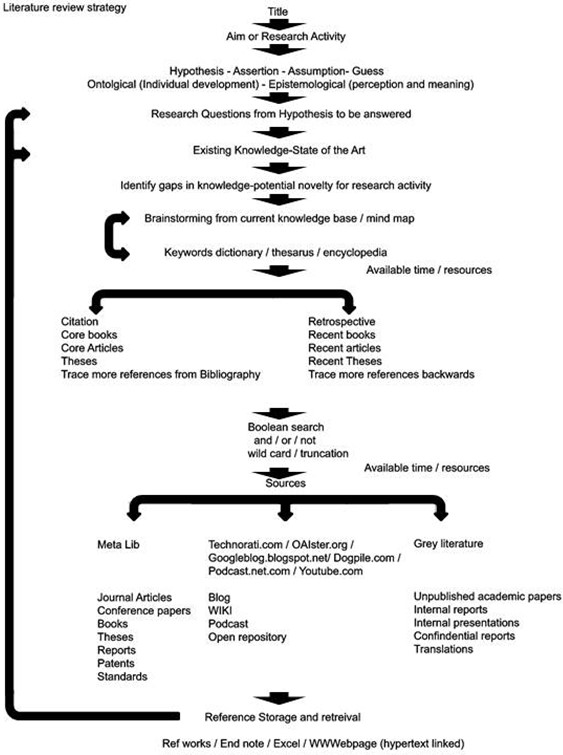“A literature review is a systematic, explicit, and reproducible method for identifying, evaluating, and synthesising the existing body of completed and recorded work produced by research, scholars, and practitioners.”
(Fink 2005: 3)
A conventional review approach to the ‘state-of-the-art’ in a given field involves reading, listening and watching a range of media. The forms of literature include:
- Primary (direct source);
- Secondary (interpreted source); and,
- Reference source (background or overview of sources).
A review is constrained by time and available resources during the specific study period. A ‘screen’ may be used to put limitations on a large amount of available literature. A ‘practical screen’ may include:
- Language;
- Date of publication;
- Setting for the study; and,
- The format of outcomes.
A ‘methodological screen’ involves defining your criteria for evaluating the study’s coverage or scope and its quality. (Fink 2005: 3-5)
An iterative cycle of trawling (wide review) and mining (following specific authors or journals) of literature may be applied (Hart 2001:29). Keywords used when undertaking a Boolean (and or) search. Truncation, using an * symbol to complete the word or term, was also used, using computer search engines.
Useful links
Fink, A., 2005. Conducting Research Literature Reviews: From the Internet to Paper, Thousand Oaks, California: Sage.
Hart, C., 2002. Doing a literature search: Releasing the social science research imagination, Sage, London.
Torrens, GE (2011) Universal Design: empathy and affinity. In Karwowski, W, Soares, M, M, Stanton, A, N, Eds, (ed) Handbook of Human Factors and Ergonomics in Consumer Products, CRC Press, pp.233-248 Available at: (http://www.crcnetbase.com/doi/abs/10.1201/b10950-19), Accessed: [23/09/015]
Torrens, G.E., 2012. Assistive Technology product to Universal design: A way forward, Design For All India, 7 (7), pp.182-205 Available at: (https://dspace.lboro.ac.uk/dspace-jspui/handle/2134/15736), Accessed:[23/09/2015]
Torrens, GE and Black, K (2011) Equipment design in inclusive physical activity and disability sport. In Riobas, AC, Stamatakis, E, Black, K (ed) Design for Sport, Gower, pp.153-178, Available at: (https://dspace.lboro.ac.uk/dspace-jspui/handle/2134/9025), Accessed: [21/01/2021]
Torrens, G.E., 2018. The order and priority of research and design method application within an assistive technology new product development process: a summative content analysis of 20 case studies. Disability and Rehabilitation: Assistive Technology, 13(1), pp.66-77.Available at: (https://dspace.lboro.ac.uk/dspace-jspui/handle/2134/9025), Accessed: [21/01/2021]

